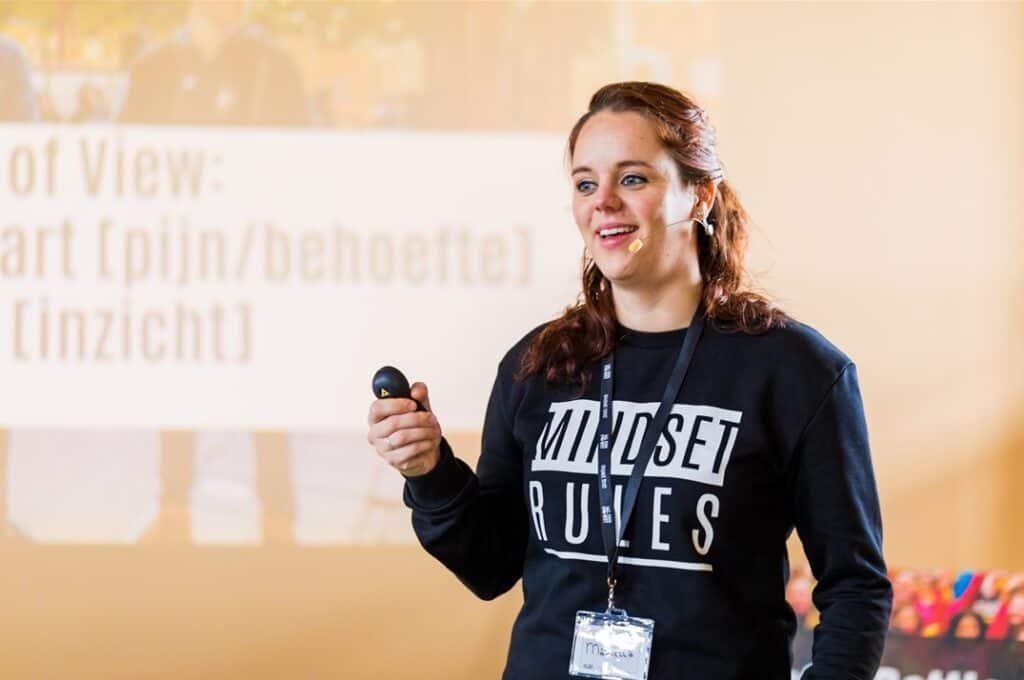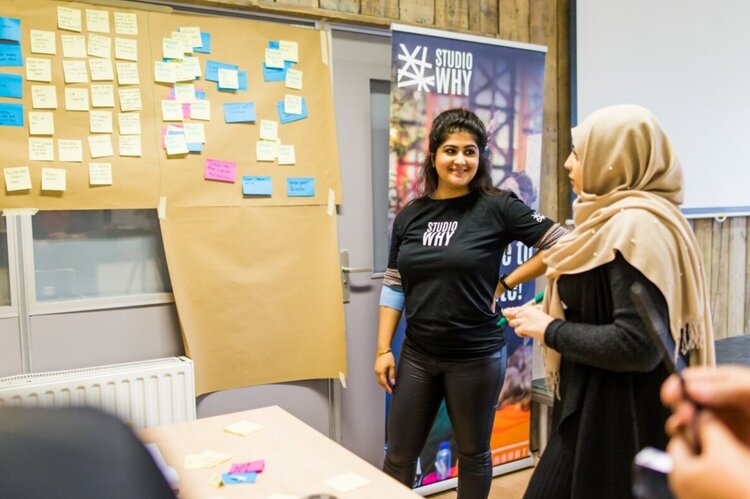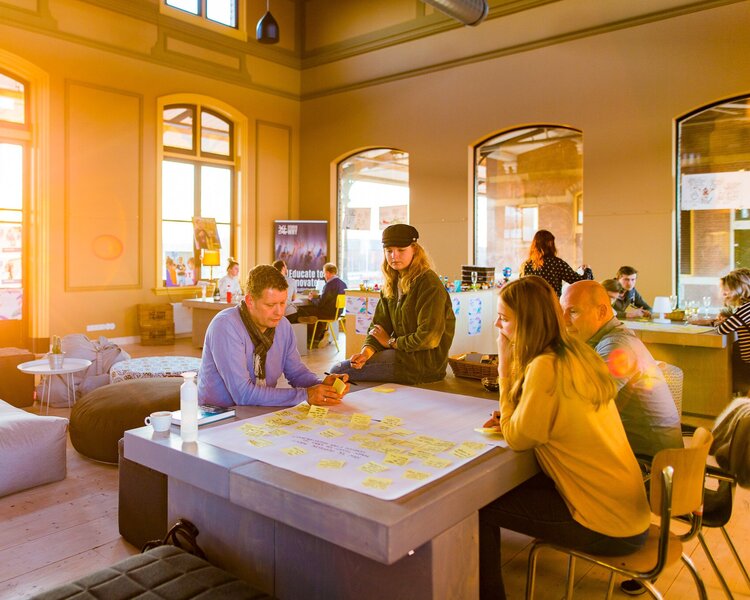
Iris Lubberink is a writer from the Netherlands who explores a world that is unknown to her. In this article Iris took it upon her to interview Marcella van Eijndhoven from STUDIO.WHY about what it means to be a good facilitator.
The next step in my quest for knowledge at STUDIO.WHY I met up with Marcella. She, amongst other things, takes on the role of facilitator within STUDIO.WHY. During this conversation I learned what it means to be a facilitator and how valuable a good facilitator is to a group that is trying to achieve their goals.
STUDIO.WHY
STUDIO.WHY is active in many branches and organizations. There are trainings for the Ministry of Defense, as well as construction companies and health care. Even though the diversity is great within their clients, their focus is always the same: Developing human skillsets and entrepreneurial mindsets. No matter the sector, everywhere there are organizations and they all contain people. And all these people contain a set of skills they put to use and develop withing field of work.
What is a facilitator?

Where it comes to content within a training and its trainer, the energy of the group is key when it comes to facilitating. A facilitator looks at what happens between the members of the group, both verbally as nonverbally. Facilitating is the actual guiding of a group during trainings and workshops. Participants need to have a good time but they also need to learn, which is a facilitators responsibility. A project manager focusses on the content. Without a facilitator a group might get carried away within the content and be more focused on achieving the end goal, than having a good experience throughout the process. A facilitator focusses on the experience of the group. How are they going through the steps of the workshop? Wat happens with the people? It is important to look at what happens between the members of the group. When people have a conversation, internally a lot happens. They might get distracted. It is a facilitators task to make sure this goes smoothly. By observing different interactions and looking at body language it is possible to see if participants are engaged or not. By analyzing these interactions a facilitator makes sure that the process of the training goes well.
As soon as a group of wants to achieve their goals it is pertinent that a facilitator is present. There are two elements that play an important role: Content and experience. As a person you need both. When you feel responsible for a strong content, there is a risk that you focus too much on it. The experience of a training is just as important. The experience needs to be positive to make a lasting impact. Therefor it is crucial that people don’t focus too much on the content for the experience to go to waste. When participants have a positive experience in a training, they maintain a positive association with it and the content is connected to this. This way a lasting impact is created.

What to do and what not to do.
Because of the fact that a facilitator is constantly working with different levels of interaction, it is a extremely intense and challenging task. Therefor there are a few do’s and don’ts.
Do’s:
 Create a safe environment. This starts even before the session starts. It’s about welcoming the people and setting the ambiance in the room. But it’s also about getting to know each other as a person. Who is someone besides work? You have to create a safe space for people to speak up. This requires an approachable facilitator, who can read the room. There should be a match between energies of the facilitator and the group. A facilitator is humble, modest and a good listener. The group needs to shine and is in the spotlight, not the facilitator.
Create a safe environment. This starts even before the session starts. It’s about welcoming the people and setting the ambiance in the room. But it’s also about getting to know each other as a person. Who is someone besides work? You have to create a safe space for people to speak up. This requires an approachable facilitator, who can read the room. There should be a match between energies of the facilitator and the group. A facilitator is humble, modest and a good listener. The group needs to shine and is in the spotlight, not the facilitator.Don’ts:
Subscribe to our 3-weekly newsletter: The Innovators Journey to get valuable insights, tips, resources and special offers to drive change.
We are dedicated to helping individuals and organizations unlock their innovation potential. Our team offers a range of services including webinars, workshops, tailored programs, coaching, and training that can be tailored to fit your specific needs and goals. Whether you are a large group or an individual seeking one-on-one support, we have options to accommodate you. Contact us today to discover how we can help drive innovation and success within your organization.
Education
Public Service
Healthcare
Infra & Mobility
Tech & ICT
Food & Pleasure
Finance
STUDIO.WHY
Genteldijk 5
4191 LD Geldermalsen
The Netherlands
We set the language based on your browser settings. If you would like to visit the site in another language you are most welcome to select that here!